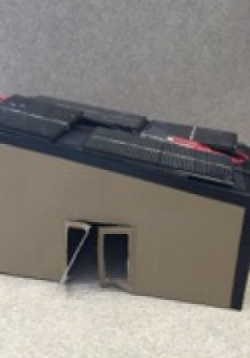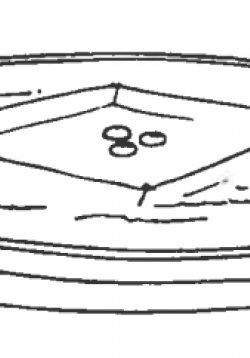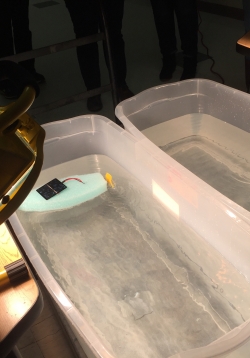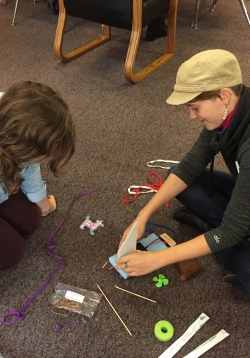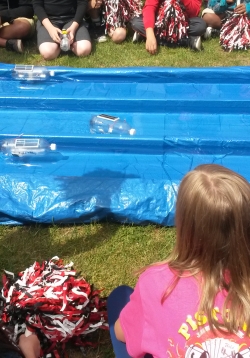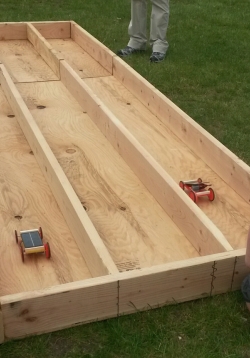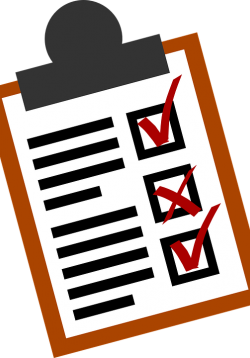Mini Solar Houses Unit
In Lesson 1, the lesson focuses on understanding how the angle and orientation affect the amount of energy that is generated through use of a solar cell. Paper azimuth finders, Keva Planks, and multimeters will be used in order for students to draw...
What is Force?
Students will build a barge out of tin foil and describe the forces acting it. The barge itself is designed only with the constraints that passengers within the barge will not get wet, allowing for students to experiment with different shapes and...
Solar Boat Science Investigation
Design a science investigation to test a solar speedboat, airboat, and surface submarine. Students will use the “Planning an Investigation Template” in order to determine their motivations for designing a solar boat, make predictions about the outcomes...
Building Solar Boats
Students will follow step-by-step instructions to build their solar boats. They will troubleshoot as necessary by making sure electricity flows into the motor to make the vehicles move by propeller or gears. They will be using their planned investigations...
Collect Data and Compare Performance of Different Boat Designs
Students will race the solar speedboats, airboats, and surface submarines and then compare the performance results and of the various types of solar boats made by the class. Students will compare and contrast forces acting on the system by examining the...
Analyze Data and Develop Conclusions
Students have performed the investigation. They will now analyze their data, refer to their initial predictions, and develop their conclusions. Students will have the opportunity to discuss the usefulness of both quantitative and qualitative data forms,...
Collect Data...Then Compare and Contrast
Students will race different iterations of solar cars: geared and pulley-system cars using varying gear ratios. Students will have the opportunity to make predictions, record data, and explain the results centered on the selection of these different...
Analyze Data and Draw Conclusions
Students have performed the investigation and will now analyze their data. They will accomplish this through a journaling activity that requires them to use the data collected from the actual races. The will refer to sentence frames in order to make...
Solar Ovens: Frontload Vocab. And Preview Standards
Vocabulary and standards will be reviewed throughout all of the lessons, but this day is dedicated to front loading the vocabulary and previewing the standards. Students will use their energy workbook to keep track of vocabulary from this point forward...
Non-renewable Energy/Global Warming/Pollution
NOTE: THIS LESSON RELIES ON EPA CLIMATE CHANGE RESOURCES THAT ARE NO LONGER AVAILABLE. STUDENTENERGY.ORG PROVIDES A POSSIBLE ALTERNATIVE RESOURCE.
This lesson will introduce the students to worldwide problems that we have with energy. (91% of the...

